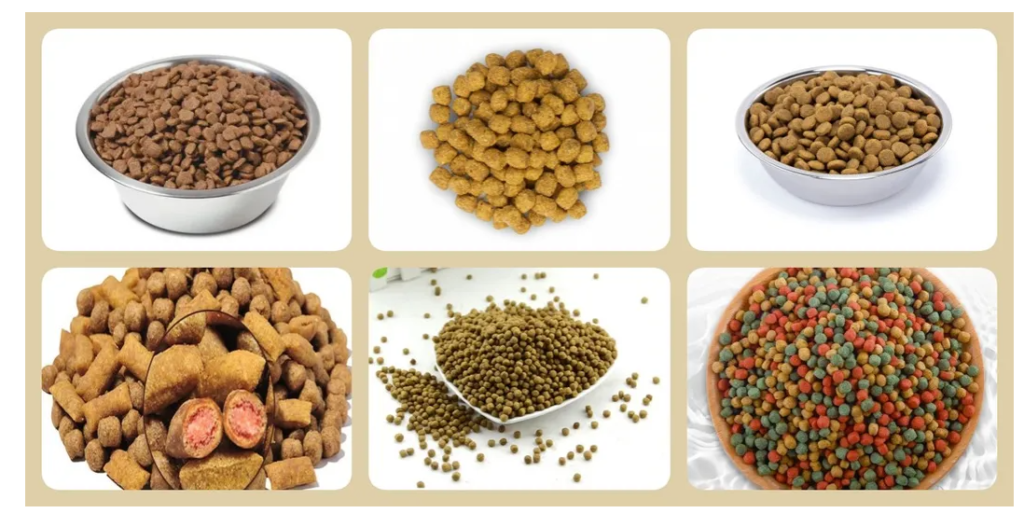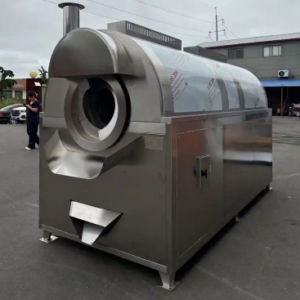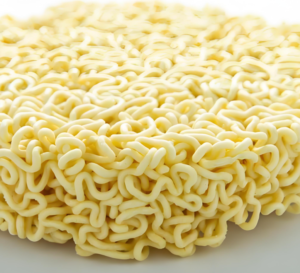<h1>The Processing Technology of Dog Food: A Comprehensive Guide</h1>Dog food processing is a sophisticated industry that ensures pets receive nutritious, safe, and palatable meals. As global demand for pet products rises, understanding the manufacturing process is essential for B2B stakeholders like exporters, importers, and manufacturers. This article explores the key stages of dog food production, highlighting best practices and innovations to help businesses optimize their operations.
dog food machine
Toggle
Overview of Dog Food Processing
The dog food manufacturing process involves transforming raw ingredients into balanced, shelf-stable products. It begins with sourcing high-quality materials and ends with packaging, ensuring compliance with international standards like those from the FDA or EU regulations. For B2B professionals in foreign trade, mastering this process can enhance product quality and market competitiveness.
Key factors influencing processing include nutritional balance, safety, and cost-efficiency. Manufacturers must consider pet health trends, such as grain-free or organic options, to meet consumer demands. This overview sets the stage for a deeper dive into each step.
Importance in the Global Market
In the pet food sector, processing technology drives export opportunities. Countries like China and the US lead in production, exporting millions of tons annually. B2B companies can leverage advanced processing to differentiate their products, such as through eco-friendly methods that appeal to environmentally conscious buyers.
Efficient processing reduces waste and extends shelf life, making it a critical factor for international trade. By focusing on these aspects, businesses can navigate supply chain challenges and tap into growing markets in Europe and Asia.
Ingredients Selection and Preparation
The foundation of quality dog food lies in careful ingredient selection. Manufacturers source proteins like chicken, beef, or plant-based alternatives, along with carbohydrates, fats, vitamins, and minerals. In B2B contexts, suppliers must verify sourcing from reputable vendors to ensure traceability and compliance with trade regulations.
Preparation involves cleaning, grinding, and measuring ingredients. For instance, meats are deboned and ground to uniform sizes, while grains are milled to optimize digestibility. This step is crucial for preventing contaminants and maintaining nutritional integrity.
Sourcing Strategies for B2B Exporters
B2B exporters should prioritize sustainable sourcing to meet global standards. Partnering with certified suppliers for organic or non-GMO ingredients can open doors to premium markets. Tools like blockchain for traceability are increasingly used to assure buyers of product authenticity.
Common challenges include fluctuating raw material costs, which can impact pricing strategies in foreign trade. Effective preparation techniques, such as pre-cooking proteins to reduce moisture, help mitigate these issues and improve processing efficiency.
Mixing and Blending
Once ingredients are prepared, the mixing and blending stage ensures a homogeneous mixture. This involves combining dry and wet components in precise ratios using industrial mixers. For dog food, achieving the right balance is vital for nutritional consistency and palatability.
In B2B manufacturing, automated systems measure and blend ingredients to minimize errors. This step often includes adding preservatives or functional additives, like probiotics, to enhance shelf life and health benefits. Blending technology has evolved to handle large-scale production while maintaining quality.
Techniques for Optimal Blending
Advanced techniques, such as ribbon blenders or paddle mixers, are standard in modern facilities. These ensure even distribution of micronutrients, preventing nutrient hotspots that could affect pet health. For exporters, investing in high-tech blenders can reduce production time and improve product uniformity for international shipments.
Blending also allows for customization, such as creating formulas for different dog breeds or life stages. This flexibility is a key selling point in B2B negotiations, enabling manufacturers to tailor products to specific market needs.
Extrusion and Shaping
Extrusion is a core process in dog food manufacturing, where the blended mixture is cooked under high pressure and forced through a die to shape kibble or treats. This method denatures proteins, gelatinizes starches, and kills pathogens, making the food safe and digestible.
The extrusion process typically involves heating the mixture to 100-150 degrees Celsius, followed by rapid expansion as it exits the extruder. This creates the familiar crunchy texture of dry dog food, while also locking in nutrients. B2B professionals benefit from extrusion’s efficiency in producing large volumes for export.
Innovations in Extrusion Technology
Recent advancements include twin-screw extruders that offer better control over temperature and moisture, resulting in higher-quality products. For foreign trade, these innovations reduce energy consumption, lowering costs and environmental impact—key factors for eco-conscious buyers.
Shaping options, like varying die sizes, allow for diverse product forms, such as pellets or bites. This versatility helps B2B companies meet regional preferences, such as softer kibble for European markets versus harder varieties in Asia.
Drying and Cooling
After extrusion, drying removes excess moisture to prevent spoilage and extend shelf life. This is achieved using ovens or dryers that circulate hot air, reducing water content to below 10%. Proper drying is essential for maintaining the food’s crunch and nutritional stability.
Cooling follows drying to prevent condensation and microbial growth. In B2B settings, precise control of these processes ensures products meet export standards, such as those requiring low moisture levels for long-distance shipping.
Best Practices for Drying Efficiency
Modern drying systems use energy-efficient technologies like fluidized bed dryers, which minimize heat loss and speed up the process. For manufacturers, this translates to cost savings and faster turnaround times for B2B orders.
Cooling techniques, such as counterflow cooling, help preserve flavors and textures. Implementing these practices can enhance product appeal in competitive international markets, where quality and longevity are paramount.
Coating and Flavoring
Coating adds flavors, fats, and vitamins to the exterior of dog food kibble, enhancing appeal and palatability. This step often involves spraying oils or liquid coatings in a rotating drum, ensuring even application without compromising the core product.
In B2B manufacturing, flavoring is tailored to market trends, such as natural or meat-based flavors. This customization boosts export potential by aligning with consumer preferences in different regions.
Enhancing Palatability for Global Markets
Advanced coating methods use encapsulation to protect sensitive ingredients like omega-3 fatty acids. For exporters, this means offering premium, health-focused products that command higher prices in B2B deals.
Flavor testing is integral, with sensory panels evaluating taste and aroma. By prioritizing this, businesses can differentiate their offerings and build strong trade relationships.
Packaging and Quality Control
Packaging protects dog food from contamination and maintains freshness during storage and transport. Options include bags, boxes, or pouches with barriers against oxygen and moisture. In B2B contexts, packaging must comply with international regulations for labeling and safety.
Quality control runs throughout the process, involving lab testing for pathogens, toxins, and nutritional accuracy. Automated systems detect defects, ensuring only high-standard products reach the market.
Ensuring Safety in Export Packaging
For foreign trade, packaging innovations like resealable bags or eco-friendly materials appeal to sustainability-minded buyers. Regular audits and certifications, such as ISO standards, bolster trust in B2B transactions.
Final inspections include checking for physical contaminants and verifying nutritional labels. These measures are critical for avoiding recalls and maintaining brand reputation globally.
Innovations in Dog Food Processing
The industry is evolving with technologies like 3D printing for custom shapes and AI for predictive quality control. These innovations improve efficiency and allow for personalized pet food formulations, opening new B2B opportunities.
Sustainable practices, such as using upcycled ingredients or reducing water usage, are gaining traction. For exporters, adopting these can lead to certifications that enhance market access.
Future Trends in Processing
Emerging trends include plant-based alternatives and functional foods with added health benefits. B2B companies investing in R&D can capitalize on these to expand their export portfolios.
Automation and data analytics are streamlining operations, reducing costs, and minimizing errors. This positions manufacturers for long-term success in the global pet food trade.
FAQ on Dog Food Processing
What is the most critical stage in dog food processing? The extrusion stage is often considered critical as it ensures safety and nutritional bioavailability, making it essential for high-quality production.
How does processing affect the nutritional value of dog food? Processing can enhance digestibility by breaking down proteins and starches, but over-processing may degrade some nutrients, so manufacturers use techniques like coating to preserve them.
What regulations must B2B exporters follow? Exporters need to comply with standards like the FDA’s Current Good Manufacturing Practice (CGMP) and EU feed regulations to ensure safe, legal international trade.
How can businesses improve processing efficiency? Investing in automated systems and regular training can optimize workflows, reduce waste, and lower costs, which is vital for competitive B2B operations.
What role does sustainability play in modern processing? Sustainability focuses on eco-friendly ingredients and energy-efficient methods, helping businesses attract environmentally conscious partners in global markets.
Conclusion
In summary, the processing technology of dog food is a multifaceted process that combines science, innovation, and quality assurance to meet the needs of pets and their owners worldwide. For B2B professionals in foreign trade, understanding these stages—from ingredient selection to packaging—can drive efficiency, ensure compliance, and foster growth in competitive markets. By embracing advancements and prioritizing safety, manufacturers can deliver superior products that build lasting partnerships and contribute to the thriving pet food industry.







